Study animals and study site
13 adult cinereous vultures (Aegypius monachus) (six females and seven males). The vultures were housed in the dating aviary at Zoo Planckendael, Belgium. The mesh-covered aviary comprised a total area of 645 m2, and had a height ranging between 6 m and 15 m. The aviary included perches, trees, stumps, logs, a variety of vegetation, rocks, a pool and shelters of various sizes. The aviary was an outdoor, free-flight exhibit.
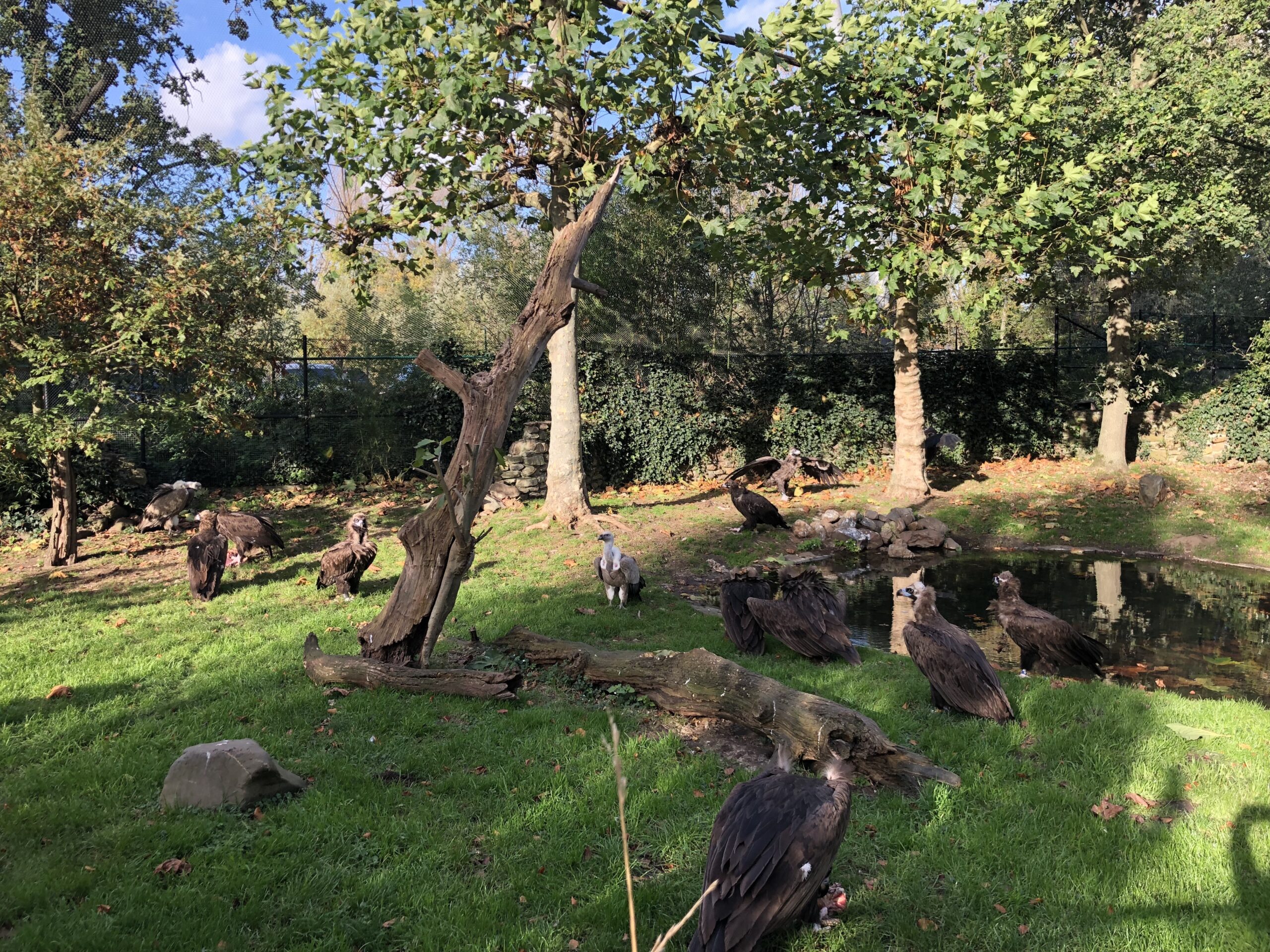
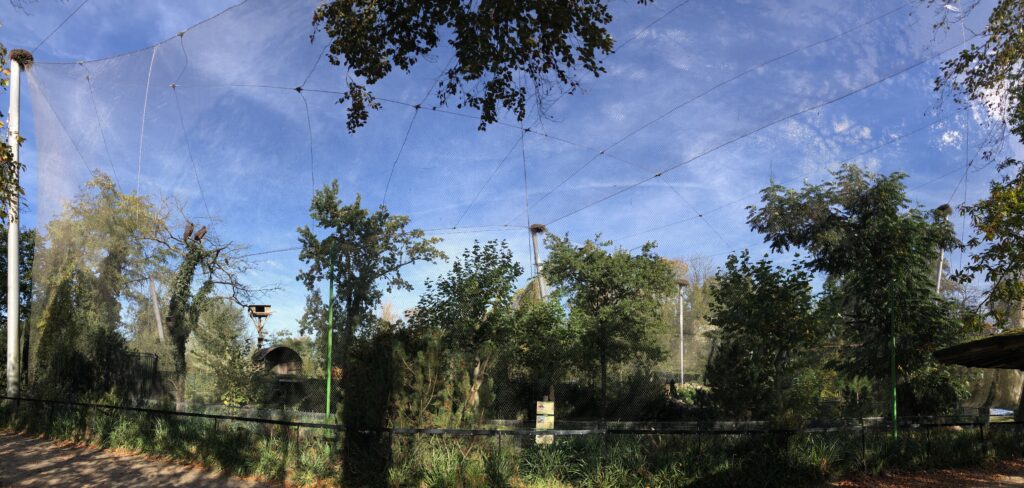
Environmental enrichment types
Dietary enrichment
a. Large carcass
b. Forage box
c. Twig balls
d. Wooden box with tubes
These items focus on creating a challenge to obtain food.
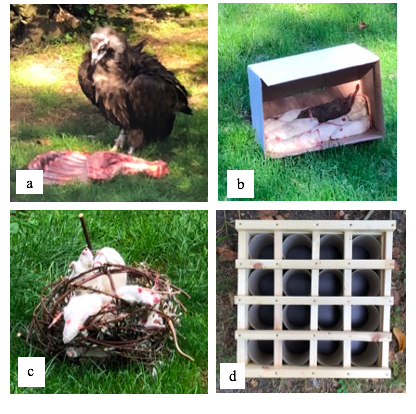
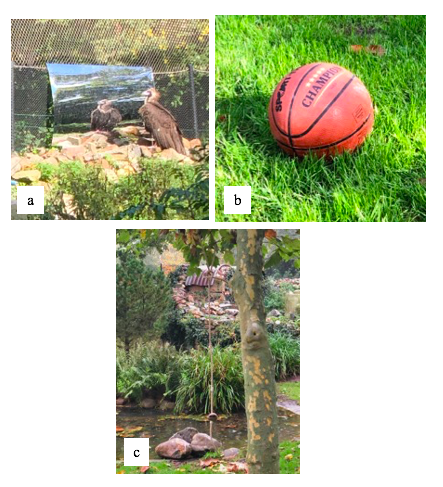
Novel item enrichment
a. Mirror
b. Basketball
c. Rope
These items focus on increasing the complexity of the environment.
Social and structural enrichment
a. Nesting material
This item focuses on interactions between conspecifics and on alternating the physical environment.
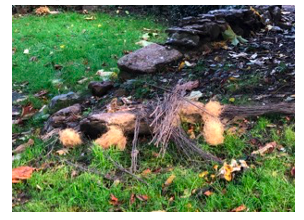
Schematic map of the enclosure and placement of enrichment items
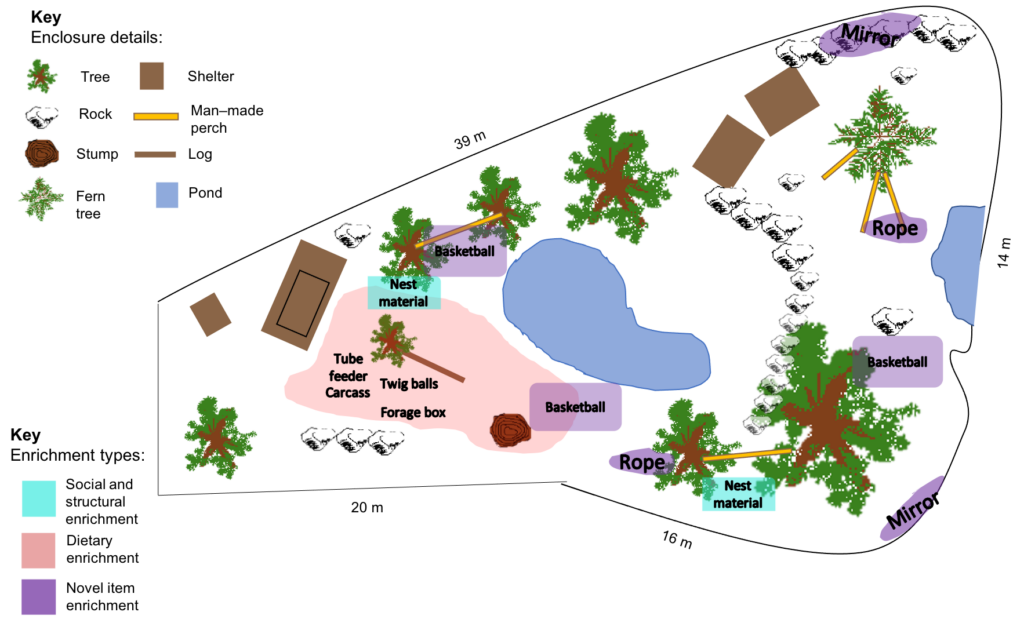
Procedure and data collection
Two conditions were applied for this study, a baseline condition over a period of nine days and an enrichment condition over a period of 65 days. During the baseline condition, no enrichment items were presented to the vultures. During the enrichment condition, environmental enrichment items were presented repeatedly and in a pseudo-randomized order to avoid habituation. Each item was presented in 5 sessions. Comparisons were made between the baseline period and the enrichment period.
Data were collected between July 18th 2022 and November 14th 2022, over a total of 74 days. Using continuous focal sampling, each bird was observed twice a day for five-minute intervals, resulting in a total of ten minutes of observation a day per bird. The frequency of the interaction with the enrichment as well as the duration the vultures interacted with each enrichment item was recorded, in addition to any other behaviour that occurred and was part of the ethogram. The behavioural recordings were done using the ZooMonitor app. A Kowa TSN-1 telescope was used to observe the birds at a distance not visible to the naked eye.